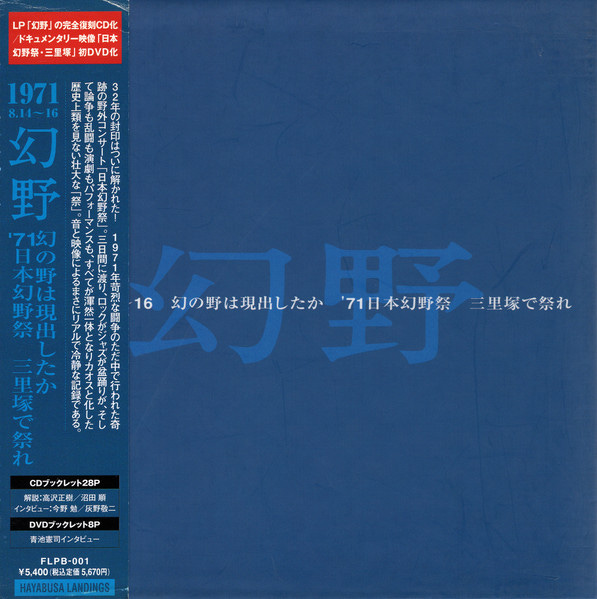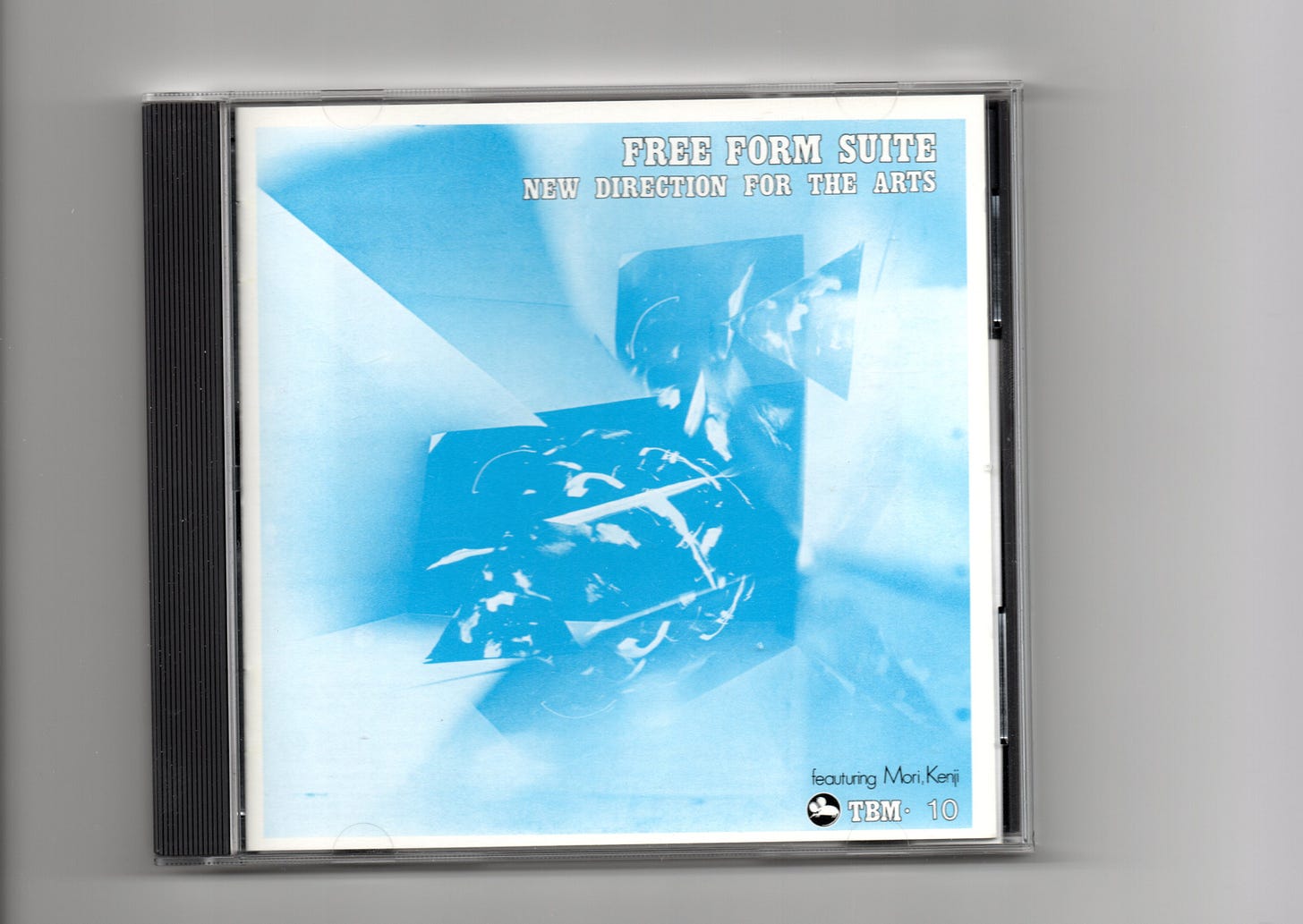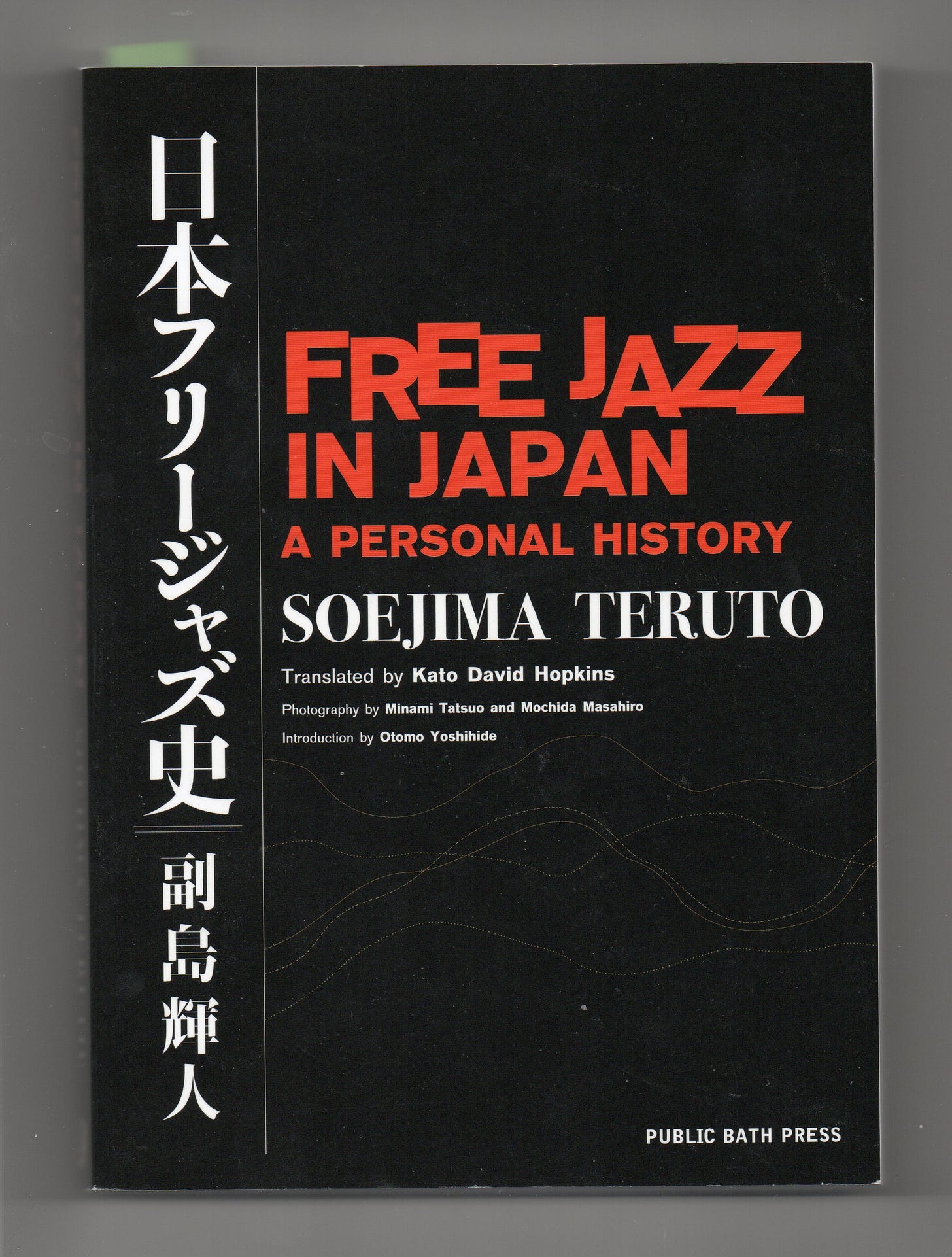Neuguitars 2024 #18 Takayanagi Masayuki and New Directions for The Arts: “Projection: The Complete Inspiration and Power Live”
The early 1970s were a hot time for Japan. The country, like the rest of the world, was seething with dissatisfied energies, with violent conflicts, with cultural, social and political frictions. The world of Jazz was no exception thanks to the advent of a series of musicians as courageous as they were innovative, determined to renew and rejuvenate a musical environment that was perhaps all too linked to Western influences. One of the telluric centers of revolts and clashes with the police, as well as a fertile laboratory of cultural pollination, was Shinjuku. Neon lights, gigantic colored writings, mega screens, music and sounds of all kinds, voices of sellers, skyscrapers. People, people everywhere. Now Shinjuku is known for being the business and shopping district in the West of Tokyo. This neighborhood is now an icon of Japanese modernity, a trope that resonates with both external and internal audiences: the teeming termite mound of a station, the city's busiest transportation hub, handling over two million commuters a day ; the consumer paradise of the many interconnected department stores in the area. A multi-layered complex of colour, movement and modernity. During the 1960s and 1970s, Shinjuku managed, however, to create a reputation as an artistic and political hotbed, an incubator of creative approaches to art born between the famous Kiinokuniya bookshop, the tiny bars and artists' hangouts of Golden-Gai (celebrated in Wim Wenders' Tokyo Ga), the jazz and classical cafés of Kabukicho and the gay bars of Nichome. The creative energies of the artists were partly fueled by the climate of revolt in the streets. The self-sacrificing mood that underpinned the postwar "economic miracle" had begun to fade into discontent with corrupt politicians and anger about the Vietnam War and American imperialism.
Against this socio-cultural and economic background, the trio-quartet group New Directions for The Arts came to life, led with ferocious determination by guitarist Takayanagi "Jojo" Masayuki. Takayanagi was one of the few Japanese jazz musicians to push against the rigid constraints of orthodox swing, bop, and modal jazz. Born in 1932 in Tokyo, Takayanagi dropped out of high school at age 16 to become a musician. Turning professional after three years of hard study, cutting his teeth in jazz groups such as Nishi Ryosaburo's Quintet, Daddy Little Combo and Sakuma Makio's Jokers Quintet, the young Takayanagi soon earned a reputation for his extraordinary technique and ability to sight-read any music placed in front of him. Despite having a prestigious and comfortable career behind him, his musical restlessness led him to form a series of short-lived groups, all characterized by a very high desire for musical innovation. The time sheet drawn up by Yasunori Saito, included in the beautiful box set of three LPs Station '70: Call In Question / Live Independence, produced in 2023 by Black Editions, places the date of birth of this group as June 1971, with the trio formed by Takayanagi, Mori Kenji (horns) and Yamazaki Hiroshi (drums).
The trio tested their strengths on August 14, 1971, participating in the Nippon Genyasai festival in Sanritsuka, Chiba, with a performance partially traceable in the double CD/DVD box set “Various – 1971 幻野 幻の野は現出したか '71日本幻野祭 三里塚で祭れ” , produced by the Hayabusa Landings record company in 2003 and, above all, in the CD “Complete "La Grima"", released in 2007, for Doubtmusic.
On May 19, 1972, Takayanagi entered the Aoi Studio, for this group's debut album: “Free Form Suite”, which would quickly become another significant album for Japanese free jazz.
Accompanying him were Kenji Mori, (Clarinet, Flute, Soprano Saxophone, Alto Saxophone, Piccolo Flute, Recorder), and on drums Hiroshi Yamazaki and Joe Mizuki. Kenji Mori (born 1942) was a versatile musician whose primary instrument was the alto saxophone, but equally at ease with the tenor saxophone, various flutes, clarinet, and even recorders. He appeared on many Three Blind Mice records as a sideman, but rarely as a leader. Joe Mizuki, also associated with Takayanagi several times, passed away on March 20, 1997.
The album is another shining example of the musical heterogeneity that characterizes Takayanagi. Soejima Teruto writes in his book “Free Jazz in Japan”:
“As he wrote three years later, "...the author (Takayanagi) had his long cherished dream come true as the trio with Yoshizawa Motoharu and Toyozumi Yoshisaburo continued to rehearse in preparation for the recording at Teichiku in September of 1969 of his first work as leader, Independence. At that time, and continuing to this day, the goal has been finding concrete expression for the stillness and motion inherent in a space, in 'gradual projection' and, later on, in 'mass projection.' By mixing and combining these two approaches, truly infinite possibilities opened up. From one individual conception new techniques of playing developed, new choices of various new powerful tools, discoveries, creativity...." (from the liner notes to Free Form Suite)”
A year later the group participates in one of the most important musical events in Japan: Inspiration & Power 14 FreeJazz Festival, organized by Soejima Teruto himself. The festival occurred in Shinjuku, from June 27 to July 12, 1973, at a place called "Art Theater Shinjuku Bunka Gekijo". The festival lasted fourteen nights. Live performances began each evening at 9pm after all of the day's movies had been screened. It was an extraordinary event in the history of Japanese jazz. Sixteen groups performed, mostly Japanese free jazz musicians.
Teruto Soejima, founder of both the New La Jazz Hall and then, after its closure in May of the Shibuya “Pulcinella" (a small theater of the Hitomi-za puppet company), decided to bring together the artists close to him and hold a " Free Jazz Festival", a great rebirth of free jazz to reinvigorate and re-inspire the community of musicians who agreed to perform at the festival. New Directions for The Arts was also invited to perform on July 9, 1973.
As evidence of those fourteen nights of intense artistic creativity, a double LP was released by Trio Records, containing some of the performances of eight of these groups, including about ten minutes of Takayanagi's performance (about an hour long) and associates, with the title “Inspiration & Power 14 Free Jazz Festival 1”.
For nearly forty years it was thought that a complete recording of the set was not available. Until now. Some time ago Yasunori Saito, owner of the independent record company Jinya Disc, which for years has undertaken laudable and careful research and reprinting of Takayangi's music on CD, communicated to Otomo Yoshide the discovery of a cassette, found among Mr. Takayanagi after his death, a complete recording of this legendary live performance. The problem was the music recorded on the cassette was not fully available, some takes were cut in half and other fragments started in the middle, furthermore, the cassette started silently, giving a very different impression from the ten minutes contained on the double LP “Inspiration & Power 14 Free Jazz Festival 1”. It felt like the entire set had been recorded on tape, split into several parts, and then dubbed onto cassette. The volume of the different fragments also varied from one to the next, and there were points where the volume of one channel was noticeably low. Not at all discouraged, Yoshihide managed to patiently solve each of these mysteries, carefully repairing and connecting all the fragments one by one, obtaining a complete live recording of almost an hour, recreating, thanks also to the invaluable services of the mastering engineer Shigeki Nakamura, the sound as close as possible to live performance and Takayanagi's preferred sonic signature, resulting in one of Masayuki Takayanagi's best works, in its entirety.
This recording was recently produced on CD by Jinya Disc under the title “Projection: The Complete Inspiration and Power Live”, proving to be a valuable resource not only for fans of Takajangi's music, but also for understanding the overall picture of performances in that particular historical moment.
In this performance, unlike what was recorded in “Free Form Suite”, which maintained a more traditional structure, the performance begins with the dry and sharp drums of Hiroshi Yamazaki and the more percussive forms of Joe Mizuki, followed by sober and abstract. This development gradually increases in speed, volume and heat as time passes. In the second half of the performance the band enters the world of "collective projection", up to an incandescent "mass projection". A glowing orb of musical mass brought to a critical level of condensation and gravitational accumulation, on the verge of collapsing at any moment. The result is a state of flow that moves in search of an "inner space-time" that transcends real time and space and expands endlessly without beginning or end. A powerful, intense and grandiose album and performance, an extraordinary explosion of high-volume, super-speed energy that breaks through all musical rules and restrictions known so far.
It is not surprising that Soejima comments on their performance in this way in his book “Free Jazz in Japan”:“On the eleventh night, New Direction for the Arts played an incredibly loud set, leading everybody to an intellectual pleasure beyond the extremes of tension. They even rewired the brains of the audience for a time, with their extreme speed. Co-producer of the record with Inaoka, Harada Kazuo, told of going home and having a strange dream, "I was in my body traveling through space at terrific speed when I realized that my head was extended in front of me in a long point, with sparks flying all around." I think probably a lot of the listeners felt something like that during the performance. When Takayanagi heard that story, he just nodded, without smiling, and said, "Well naturally. Last night we played really well and in a light speed dimension."”
This live recording was also the swan song of New Direction for the Arts. In September 1973 Joe Mizuki left the group, which changed its name to New Direction Unit. But that's another story.











Thank you very much for your kind words
Fantastic article. Thanks for this great insight. Obviously a universe of musicianship to explore.